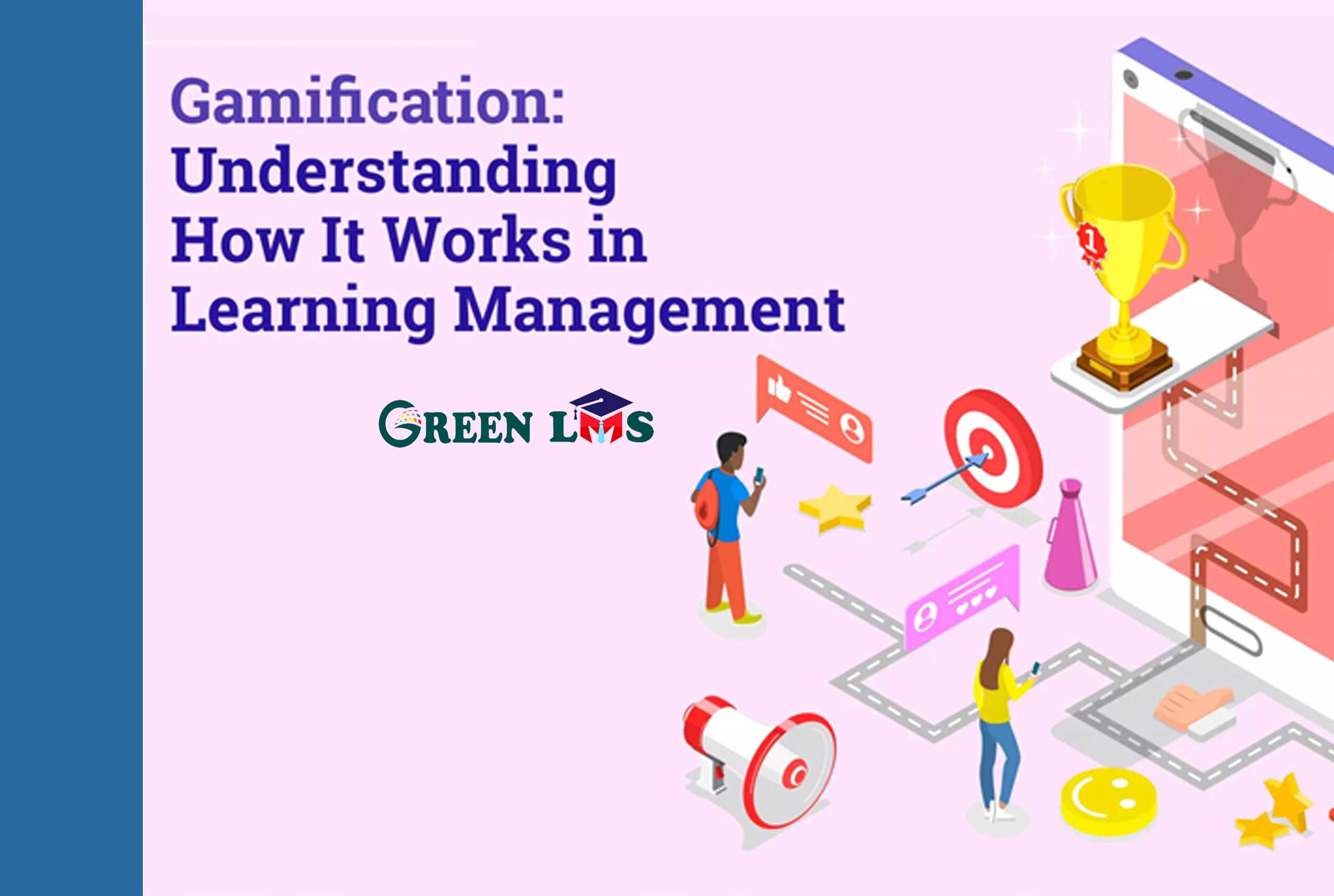INCREASING STUDENT ENGAGEMENT IN AN LMS: ADVANCED STRATEGIES THROUGH GAMIFICATION
The process of using game mechanics and design to engage and motivate users in contexts other than games is known as “gamification.” Gamification in the context of a learning management system (LMS) is the use of game components, such as points, badges, leaderboards, and quests, to enhance the learning process. It’s a powerful tool for driving student engagement in an LMS.
Gamification in an LMS can improve learning results by motivating and involving pupils, promoting friendly competition among students, and providing quick feedback on progress. For instance, points can be given for finishing assignments or reaching milestones, and students can earn badges to show that they have mastered particular abilities or bodies of knowledge. Leaderboards can be used to encourage healthy competition and motivate students to work harder for better results.
IS THERE ANY SCIENCE THAT SUPPORTS GAMIFICATION IN AN LMS?
Gamifying an online course improved student engagement and learning outcomes, according to a study published in the Journal of Educational Psychology. A gamified or non-gamified version of an online course was ostensibly randomly assigned to more than 200 college students who took part in the study. While both courses were based on the same content, the gamified course included things like points, badges, and leaderboards. The results of this study showed that students who opted for gamified courses showed higher student engagement in an LMS, higher course grades, and higher levels of knowledge retention than students in the non-gamified course.
Another study that was published in the International Journal of Emerging Technologies in Learning found that the gamification of an LMS could boost student motivation and engagement in an enterprise-learning environment. The study-involved employees of a large telecommunications company who were given a gamified training program that included badges, points, and leaderboards. Results showed that the gamified program increased employee motivation and engagement, as well as improved learning outcomes.
In an LMS, gamification improved students’ learning outcomes and engagement, especially in the areas of retention and knowledge acquisition, according to a meta-analysis of 65 studies on the subject. This study was published in the Journal of Computer-Assisted Learning.
LMS gamification examples to increase student engagement in an LMS
Deloitte:
Deloitte has used gamification to improve the effectiveness of its employee training programs. The company created a playful learning platform called the Deloitte Leadership Academy, which included badges, leaderboards, and other game elements to motivate and engage employees in their training. The platform has increased employee engagement in training and resulted in measurable improvements in worker performance.
Walmart:
Walmart used gamification to train its employees in customer service skills. The company created a gamified training program called Spark City, which simulated a Walmart store and allowed employees to practice their customer service skills in a fun and engaging way. The program helped improve employee knowledge and confidence in customer service skills.
Hilton Worldwide:
Hilton Worldwide has used gamification to train its employees in a range of job skills, including leadership, sales, and customer service. The company created a playful learning platform called Hilton Worldwide University that included badges, points, and leaderboards to motivate and engage employees in their training. The training platform contributed to greater employee involvement while also improving employee performance in quantifiable ways.
Advanced Strategies to Increase Learner Engagement on an LMS Using Gamification
Personalization:
Tailor the gamification experience to the needs and preferences of each student. Based on student progress and interests, personalize challenges and rewards using LMS data.
Social Interaction:
Promote social interaction among pupils through competitions that promote collaboration and healthy competition. This can help create a sense of community among students, which can lead to increased engagement and motivation.
Narration and storytelling:
Use a compelling story to make the learning experience more engaging and memorable. Create people, places, and conflicts that have something to do with the course material and that the learner will have to overcome.
Feedback and Progress:
Provide frequent feedback and opportunities for students to track their progress. Use badges, levels, and other visual cues to give students a sense of accomplishment and motivate them to keep learning.
Intrinsic Motivation:
Design the gamification experience to harness the learner’s intrinsic motivation. This can include giving students a sense of autonomy, mastery, and purpose, and creating challenges that align with their personal goals and interests.
Conclusion
Simply put, gamification is a clever and effective way to engage adult learners who may be getting bored with dry training sessions and increase student engagement in a learning management system (LMS). By introducing game elements like points, badges, challenges, and levels, a gamified LMS creates a fun, interactive learning experience that motivates students to stay engaged and keep learning.
Thanks to gamification, students can track their progress and achievements and get immediate performance feedback, which gives them a sense of pride and accomplishment. In addition, tailoring the learning experience to the needs and interests of each student through data analysis and machine learning, and incorporating a narrative or argument, makes the learning experience more engaging and relevant.
Students can interact with one another and work together on projects when social elements like discussion forums, social media integration, and group projects are added to the LMS. This improves student learning and fosters a sense of community.
Finally, recognizing and rewarding students for their achievements, whether through badges, certificates, or other incentives, incentivizes students to strive for excellence and stay motivated to keep learning.
Green LMS is free for 30 days! Also, visit our custom eLearning development services to create compelling eLearning courses.


